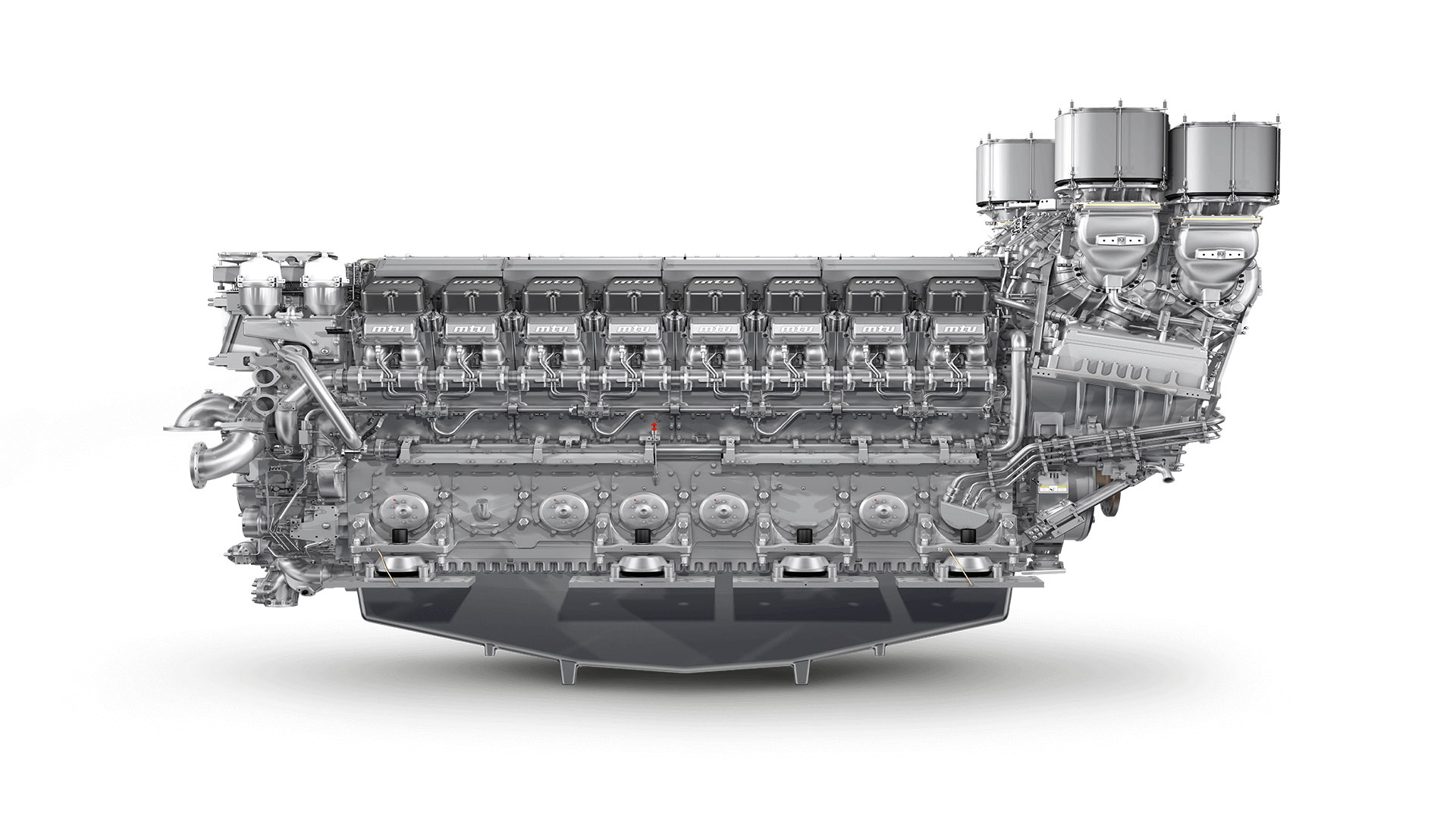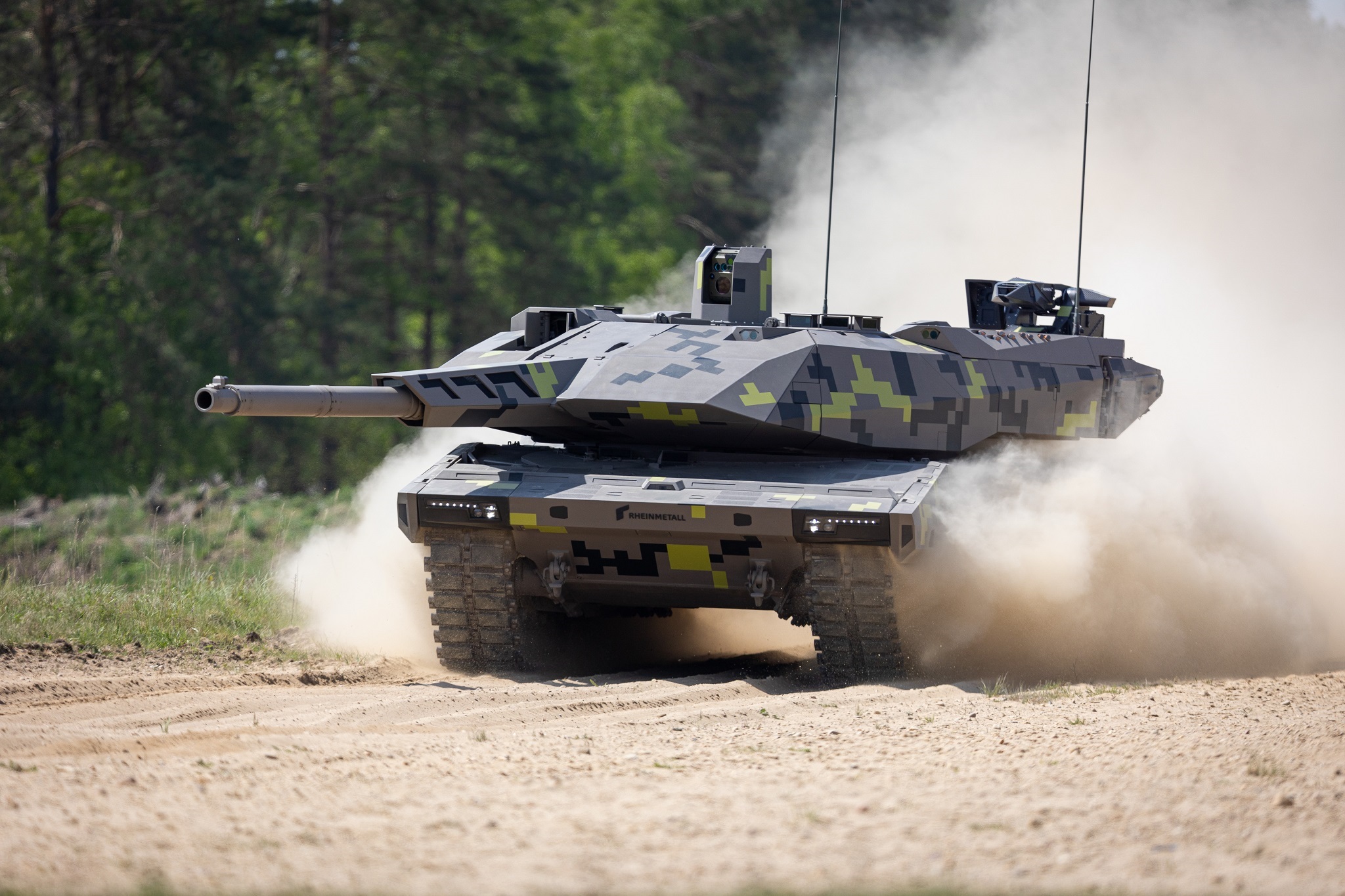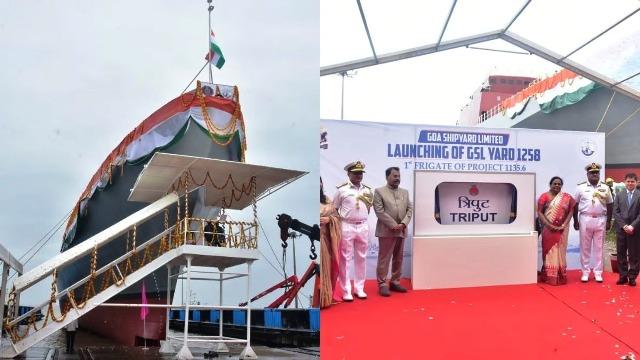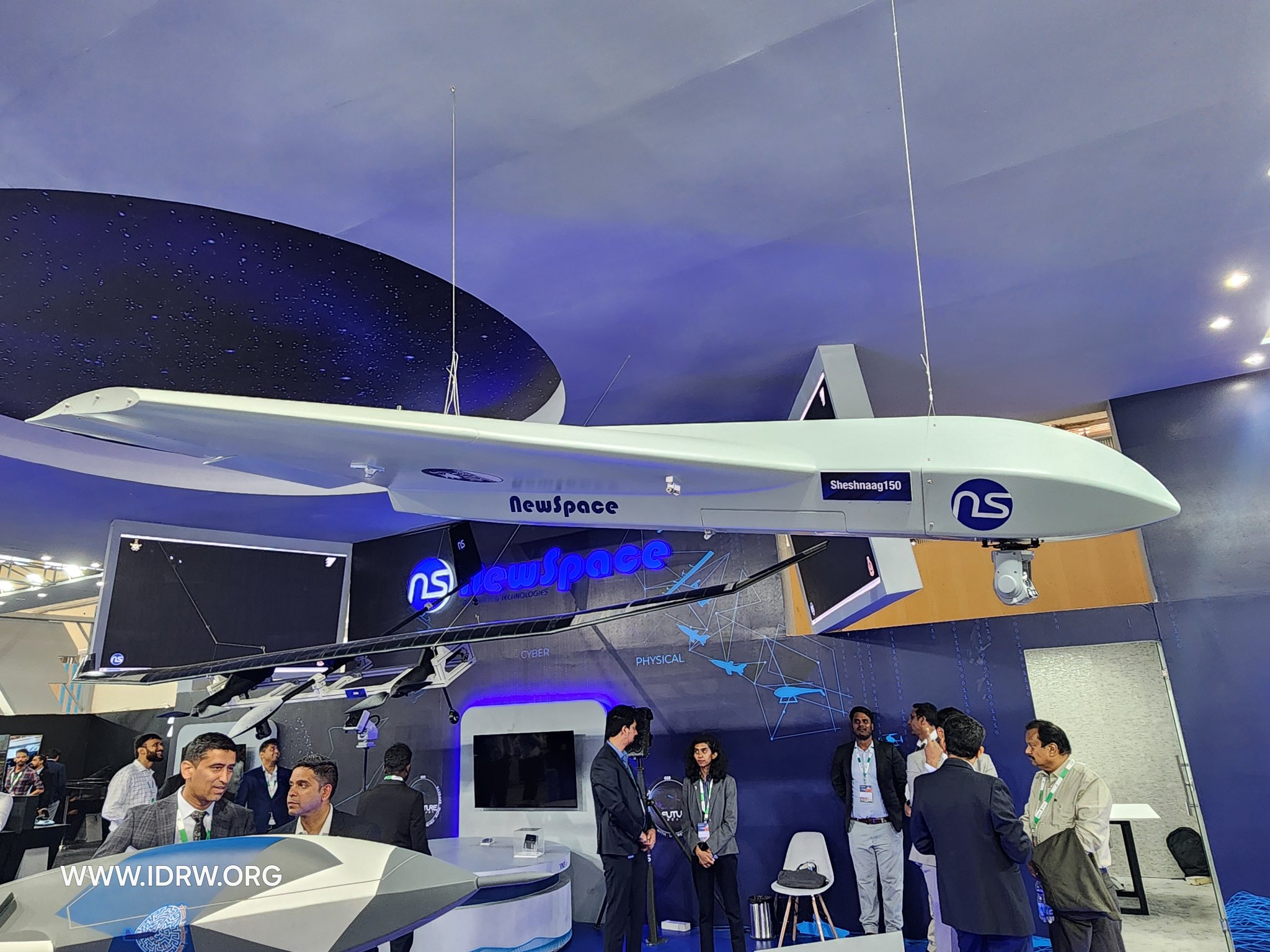SOURCE: RAUNAK KUNDE / NEWS BEAT / IDRW.ORG

In a significant stride toward bolstering India’s strategic underwater capabilities, the Defence Research and Development Organisation (DRDO) recently unveiled key components of the K-5 Submarine-Launched Ballistic Missile (SLBM), signalling that its development is gaining momentum.
The showcased items—including the missile’s canister, nose cap, torrential air bottle, and TOR gas generator casing—offer a rare glimpse into the advanced engineering behind this next-generation weapon system. With a projected range of 6,000–8,000 kilometres, the K-5 SLBM is poised to place all of China within India’s striking reach, even when launched from the farthest stretches of its coastline. Designed as a three-stage missile, the K-5 is set to arm the advanced S-4* class of submarines, further solidifying India’s nuclear triad and second-strike capability.
Continue readingSOURCE: RAUNAK KUNDE / NEWS BEAT / IDRW.ORG

The Defence Research and Development Organisation (DRDO) is gearing up for a pivotal phase in India’s naval modernization with its ambitious Project-76, aimed at designing and developing a new class of indigenous conventional diesel-electric submarines for the Indian Navy. As the program inches closer to Cabinet Committee on Security (CCS) approval—expected within the next few months—DRDO is actively planning to collaborate on developing a marine diesel engine, a critical component for the submarines.
DRDO’s mandate to maximize indigenous content—targeting 90-95%—means that relying on imported engines beyond the initial batch is untenable. The organization is thus exploring partnerships to develop a local marine diesel engine, potentially manufactured in India under a Transfer of Technology (ToT) agreement. The engine must not only meet the 3,000+ hp requirement but also integrate seamlessly with the submarine’s AIP and lithium-ion battery systems, a complex engineering feat.
Continue readingSOURCE: RAUNAK KUNDE / NEWS BEAT / IDRW.ORG

The Indian Navy is set to enhance its maritime strike capabilities by incorporating the indigenously developed Naval Anti-Ship Missile-Medium Range (NASM-MR), also known as Medium Range Anti-Ship Missiles (MRAShM), into its fleet of Boeing P-8I Poseidon maritime patrol aircraft. This ambitious plan, which involves collaboration with Boeing, aims to supplement the Navy’s existing arsenal of Harpoon AGM-84D anti-ship missiles, bolstering its ability to tackle surface threats across the Indian Ocean Region.
The NASM-MR, designed by the Defence Research and Development Organisation (DRDO), is already tailored for the Navy’s MiG-29K fighter jets and is slated for integration with the Rafale Marine and the upcoming Twin Engine Deck Based Fighter (TEDBF). Its expansion to the P-8I fleet marks a significant step in unifying advanced weaponry across diverse platforms.
Continue readingSOURCE: AFI

Bharat Earth Movers Limited (BEML Ltd), a leading Indian public sector undertaking under the Ministry of Defence, has taken a significant step toward bolstering India’s armored capabilities. On March 26, 2025, the company announced an Expression of Interest (EoI) for a License and Technology Collaboration Agreement (TCA) aimed at the joint development of an Armoured Fighting Vehicle – Future Ready Combat Vehicle (AFV-FRCV) for the Indian Army. This move underscores BEML’s commitment to advancing indigenous defense manufacturing while aligning with the Indian government’s “Make in India” initiative.
The EoI, highlighted in posts on X by @alpha_defense and others, invites prospective technology collaborators from around the globe to partner with BEML Ltd. The TCA will empower BEML to undertake a comprehensive scope of work, including the design, engineering, manufacturing, assembly, testing, supply, field installation, commissioning, repair, service, and retrofitting of the AFV-FRCV. This ambitious project aims to deliver a next-generation combat vehicle tailored to the Indian Army’s evolving operational needs, ensuring it remains future-ready in an era of rapidly advancing military technology.
Continue readingSOURCE: AFI

On March 25, 2025, GE Aerospace marked a significant milestone by delivering the first of 99 F404-IN20 engines to Hindustan Aeronautics Limited (HAL) for India’s Tejas Light Combat Aircraft (LCA) Mk1A program. The delivery, celebrated as a step forward in the 40-year partnership between GE and HAL, came after a two-year delay that had sparked concerns within the Indian Air Force (IAF) and drawn scrutiny from New Delhi. While the arrival of the engine signals progress, GE’s accompanying statement subtly pointed to a deeper issue: a five-year gap in orders that left its production line dormant, contributing to the prolonged wait.
The F404-IN20, a customized variant of GE’s proven F404 engine family, powers the LCA Mk1A, an advanced iteration of India’s indigenous fighter jet designed to bolster the IAF’s combat capabilities. By 2016, GE had delivered 65 of these engines to HAL for the earlier Tejas Mk1 jets. With no further orders on the horizon, the company shuttered the F404-IN20 production line, citing a lack of visibility on future business. It wasn’t until 2021, when HAL placed an order for 99 engines following the Cabinet Committee on Security’s approval of an 83-aircraft LCA Mk1A contract, that GE faced the daunting task of restarting a dormant supply chain.
Continue readingSOURCE: AFI

Recent close-up images of China’s fifth-generation stealth fighter jet, the J-20, have set off a firestorm of discussion on X, pitting Chinese aviation enthusiasts against Western skeptics. The detailed shots, which reveal exposed rivets, panel seams, and other surface imperfections, have led many to question the jet’s stealth credentials—and even its origins.
The viral nature of the images has fueled a broader online war of words, with users dissecting every visible feature and drawing comparisons to established stealth aircraft like the American F-22 and Russia’s Su-57.
Continue readingSOURCE: AFI

Veteran submariner Commodore Shailesh Bhalachandra Jamgaonkar (Retd.), Indian Navy, assumed charge as Director (Submarine and Heavy Engineering) at Mazagon Dock Shipbuilders Ltd (MDL) on March 25, 2025. His appointment comes at a pivotal moment for the Mumbai-based shipyard, just one week after it commenced production of India’s first Air Independent Propulsion (AIP) system for the Indian Navy’s Scorpene-class submarines. With a distinguished career spanning nearly three decades in the Navy’s Submarine Arm and a proven track record at MDL, Cmde Jamgaonkar is poised to steer the organization toward new heights in submarine technology and indigenous defense manufacturing.
Cmde Jamgaonkar’s journey with MDL began in September 2023, when he joined as Executive Director (Technical-East Yard) following his retirement from the Indian Navy. His rapid rise within the organization reflects his exceptional leadership and technical expertise. Prior to his current role, he served as Executive Director (Services) at MDL’s East Yard, where he oversaw critical operational enhancements. Now, as Director (Submarine and Heavy Engineering), he takes on a broader mandate to advance MDL’s submarine programs and heavy engineering initiatives, aligning with India’s strategic naval ambitions.
Continue readingSOURCE: IDRW.ORG

In a significant development for India’s Advanced Medium Combat Aircraft (AMCA) program, Russia has extended an offer to jointly develop a new flat nozzle design for the fifth-generation stealth fighter, contingent on India selecting its Izdeliye 177S engine. This proposal, emerging from discussions at Aero India 2025 and subsequent negotiations, underscores Russia’s intent to deepen its defense partnership with India while bolstering the AMCA’s capabilities with cutting-edge technology. The Izdeliye 177S, a fifth-generation engine with elements derived from the advanced AL-51 (Izdeliye 30) under development for Russia’s Su-57, could position the AMCA as a formidable contender in modern air combat—if India takes the plunge.
The AMCA, spearheaded by India’s Defence Research and Development Organisation (DRDO) and Hindustan Aeronautics Limited (HAL), aims to deliver a stealthy, supercruising fighter with advanced sensor fusion to meet the Indian Air Force’s (IAF) future needs. A critical component of this ambition is the engine, which must balance thrust, stealth, and efficiency. While the AMCA Mark 1 is slated to use General Electric F414 engines (98 kN thrust), the IAF has long sought a more powerful indigenous or co-developed engine in the 110-130 kN range for the Mark 2 variant, capable of supercruise and enhanced performance. Russia’s Izdeliye 177S, boasting a reported 142 kN of thrust with afterburner and stealth-optimized features, exceeds these specifications, making it an enticing option.
Continue readingSOURCE: IDRW.ORG

Goa Shipyard Limited (GSL), a key player in India’s naval shipbuilding sector, is on track to deliver the first of two Triput-class frigates, named Triput (Mighty Arrow), to the Indian Navy by the end of 2026. The warship, launched last year, is currently undergoing external fitments, marking a significant milestone in India’s push for indigenous defense manufacturing. GSL confirmed this timeline in a statement to idrw.org, underscoring its commitment to bolstering the Indian Navy’s surface fleet with advanced, domestically built vessels.
The Triput-class frigates are part of a broader effort to enhance the Indian Navy’s capabilities, building on the legacy of the six 1135.6 frigates currently in service under the Talwar-class and Teg subclass, ordered in two batches of three each. Additionally, four more 1135.6 frigates are under construction—two at Russia’s Yantar Shipyard and two at GSL—under a $2.5 billion project. However, delays have plagued the Russian-built ships, with the first frigate, Tushil, now expected by September 2024, and the second, Tamal, slated for February 2025. In contrast, GSL’s progress with the Triput-class highlights India’s growing self-reliance in naval shipbuilding.
Continue readingSOURCE: AFI

ata Advanced Systems Limited (TASL), a leading Indian defense and aerospace company, has taken a significant step toward expanding its international footprint by incorporating a wholly owned subsidiary in the Kingdom of Morocco. The new entity, named “Tata Advanced Systems Maroc SARLAU,” operates as a Limited Liability Company and has been greenlit for an investment of up to 16 million USD by TASL’s board of directors. This strategic move underscores TASL’s ambition to strengthen its position in the global defense market, with a particular focus on North Africa and beyond.
The establishment of Tata Advanced Systems Maroc SARLAU comes on the heels of a major order from the Royal Moroccan Army for 150 Wheeled Armoured Platforms (WhAP) 8×8. The WhAP, developed in collaboration with India’s Defence Research and Development Organisation (DRDO) and Tata Motors, is a versatile, amphibious armored vehicle designed for a range of battlefield roles, from troop transport to infantry combat. This contract, one of the largest for Indian-made armored vehicles both domestically and internationally, marks a pivotal moment for TASL as it transitions into a defense Original Equipment Manufacturer (OEM) with an overseas presence.
Continue readingSOURCE: AFI

Hindustan Aeronautics Limited (HAL), India’s premier Maharatna Public Sector Undertaking, has taken a proactive step to refine its Light Utility Helicopter (LUH) by issuing a Request for Quotation (RFQ) through its Rotary Wing Research & Design Centre (RWR&DC) in Bangalore. Released in late March 2025, the RFQ calls for consultancy services to address internal noise attenuation challenges identified during developmental testing of the LUH. With a submission deadline of April 4, 2025, at 14:00 HRS IST, HAL is signaling its dedication to enhancing the performance, comfort, and operational readiness of this versatile rotary-wing platform, designed for both the Indian Armed Forces and civilian use.
The LUH, a 3.0-ton class single-engine helicopter, represents a cornerstone of HAL’s rotary-wing innovation. Developed by the ISO 9001-certified RWR&DC, it features a side-by-side pilot and co-pilot configuration, a four-bladed hinge-less main rotor, and a four-bladed bearing-less tail rotor. Engineered for reliability and adaptability, the LUH is poised to replace aging Cheetah and Chetak helicopters in military roles—such as reconnaissance, troop transport, and casualty evacuation—while also targeting civilian applications like search and rescue and utility missions. With its glass cockpit, Shakti-1U engine (co-developed with Safran), and a maximum speed of 220 km/h, the LUH promises to be a workhorse across diverse terrains.
Continue readingSOURCE: AFI

GE Aerospace has officially kicked off a critical phase of support for India’s indigenous Tejas Light Combat Aircraft (LCA) program, confirming the delivery of the first F404-IN20 engine to Hindustan Aeronautics Limited (HAL) on March 25, 2025. Following this milestone, the American defense giant has committed to supplying 11 more F404 engines before the end of 2025, ensuring a steady flow of powerplants to keep HAL’s production lines humming for the LCA Mk1A jets. This development marks a turning point after years of delays, reinforcing GE’s 40-year partnership with HAL and bolstering India’s defense manufacturing ambitions.
The F404-IN20, a high-thrust variant of GE’s renowned F404 engine family, is tailored specifically for the single-engine Tejas Mk1A, offering enhanced performance with features like a higher-flow fan and single-crystal turbine blades. The delivery of the first engine, which left GE’s facility in Lynn, Massachusetts, on March 25 and is expected to arrive in India by mid-April, ends months of anticipation. HAL, tasked with delivering 83 LCA Mk1A jets to the Indian Air Force (IAF) under a ?48,000-crore contract signed in February 2021, had faced setbacks due to GE’s supply chain challenges, compounded by a five-year production gap between 2016 and 2021. With this initial delivery now complete, GE’s accelerated schedule promises to stabilize the program.
Continue readingSOURCE: AFI

In a landmark achievement for India’s defence and aerospace sector, Bengaluru-based NewSpace Research and Technologies (NRT) has successfully conducted the maiden flight of the Sheshnag-150, a long-range precision strike Unmanned Aerial Vehicle (UAV).
Named after the mythological serpent Sheshnag, this 150kg UAV represents a significant step forward in India’s quest for self-reliance in defence manufacturing and its strategic push to bolster unmanned combat capabilities. With its advanced features and swarm-based operational design, the Sheshnag-150 is poised to strengthen India’s border security and address emerging threats in an increasingly volatile geopolitical landscape.
Continue readingSOURCE: AFI

Hindustan Aeronautics Limited (HAL) has recently proposed the HLFT-42, a supersonic lead-in fighter trainer (LIFT) concept inspired by the legacy design of the HAL Marut, India’s first indigenous jet fighter from the 1960s. While the HLFT-42 aims to pay homage to India’s aviation history and address the Indian Air Force’s (IAF) need for advanced trainers, its retro-inspired design raises questions about its relevance in a rapidly evolving global aerospace landscape.
Instead of pursuing a derivative of an outdated platform, HAL should pivot towards developing a groundbreaking single-engine stealth LIFT aircraft—one that leverages technologies from the Advanced Medium Combat Aircraft (AMCA) and Tejas MkII programs. Such a platform could not only meet domestic training needs but also carve out a unique niche in the export market as a cost-effective, combat-capable stealth fighter, an offering currently absent in the global arena.
Continue readingSOURCE: RAUNAK KUNDE / NEWS BEAT / IDRW.ORG

While Indian Air Chief Amar Preet Singh and Defence Secretary Rajesh Kumar Singh have dismissed the notion of a current F-35A offer to India, including what was described as an informal offer by former U.S. President Donald Trump during a February 2025 meeting with Indian Prime Minister Narendra Modi, information obtained by idrw.org from a Lockheed Martin India official suggests otherwise. According to the source, LMI is in the process of organizing an official briefing for senior IAF leadership, with senior Lockheed Martin officials traveling from the United States for this purpose. Dates for the briefing are currently being coordinated.
idrw.org has previously reported Lockheed Martin’s reluctance to offer the F-35 within the MRFA tender framework, likely due to the potential requirements for Transfer of Technology (ToT) and a local assembly line. Instead, LM is expected to advocate for a Foreign Military Sales (FMS) approach, a government-to-government transaction facilitated by the U.S. Department of Defense.
Continue reading